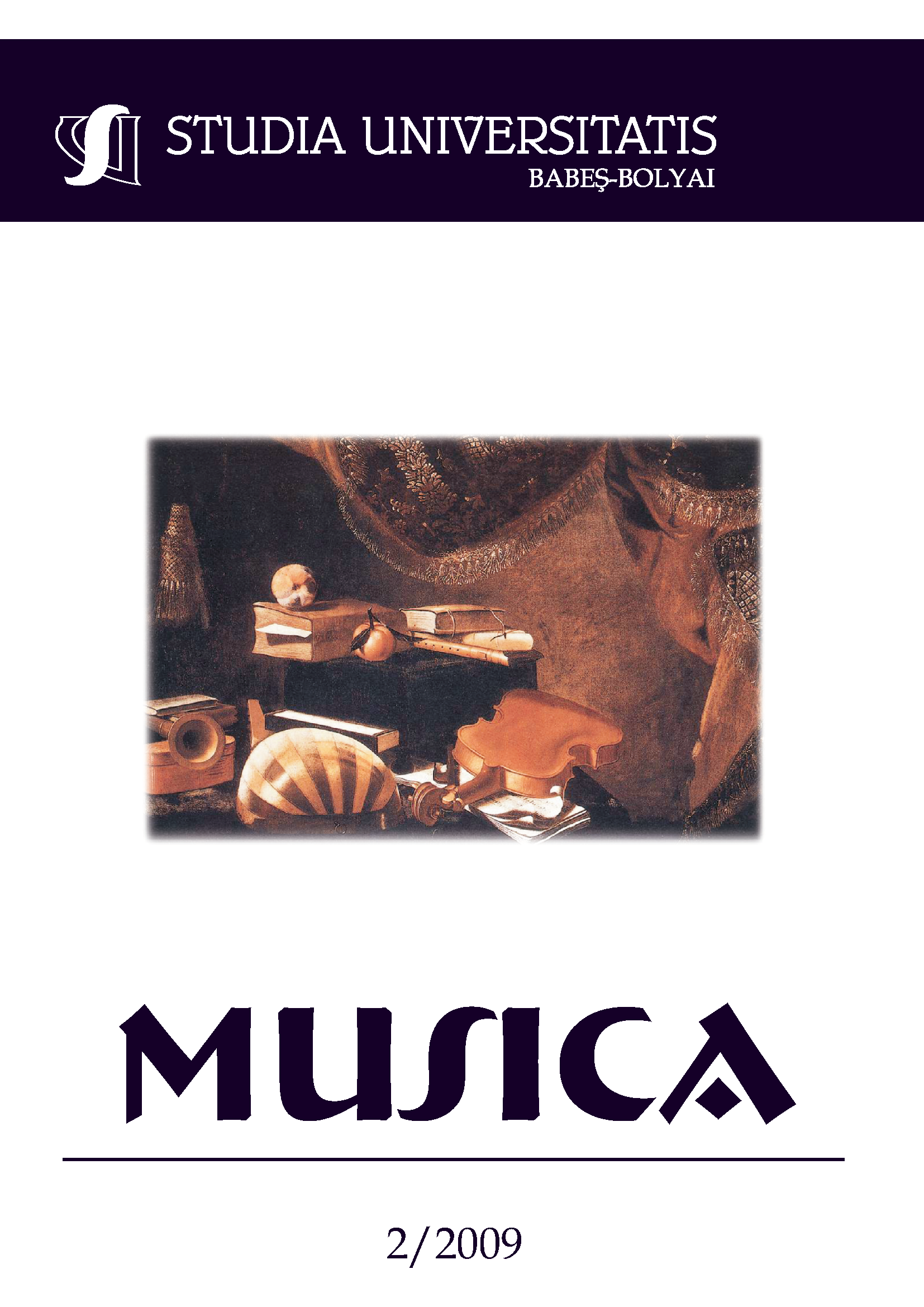THE PLACE OF BARTÓK’S THE MIRACULOUS MANDARIN IN THE CONTEXT OF TWENTIETH-CENTURY MUSIC
Keywords:
Bartók, The Miraculous Mandarin, style elements, sonority surface, central sonorities, moving cluster, contrasting musical plan, rubato-techniqueAbstract
The Miraculous Mandarin takes a special place in Bartók’s oeuvre. It is clashing in it with an ancestral force the mythical pureness of the human ideal and our decayed world fell into a deep moral crisis. This contrast appears symbolically in the contrast of East and West, experienced by Bartók as a geographical and mainly as a cultural tension in his own life and artistic faith. This crossroad brought into life that musical representation, which contrasts the primary force of primitive music with the avant-garde trepidations. The Miraculous Mandarin well illustrates that creative ideal, which lines up the compositional techniques for its aesthetical value. Thus, the musical language of this pantomime could become extremely novel, exceeding in its progressive character many works of the contemporary avant-garde tendencies.
Our study is focused on three moments of The Miraculous Mandarin (“Introduction”, “The decoy games” and “The chase”) examining its main style elements such as the problem of sonority surfaces, the phenomenon of central sonorities, the dynamic of exposition-densification-saturation, the moving cluster, the use of contrasting musical plans, the rubato-technique etc. Throughout our analysis, we recall some contemporary and later composers (like Debussy, Webern, Varèse, Stravinsky, Lutosławski, Ligeti) and their masterworks, which musical language is related to the achievements of The Miraculous Mandarin.
References
* * * Bartók and his World (ed. Peter Laki), Princeton University Press, 1995.
Angi, István, The aesthetical antinomies of Adorno in the mirror of the Frankfurt School’s outcomes, Papers on musicology, vol. 10-11, Cluj, 1979.
Antokoletz, Eliott, The Music of Béla Bartók. A Study of Tonality and Progression in Twentieth-Century Music, University of California Press, Berkeley and Los Angeles, 1984.
Boulez, Pierre, Penser la musique aujord'hui, Ed. Gouthier, Suisse, 1963.
Brown, Julie, Bartók and the Grotesque: Studies in Modernity, the Body and Contradiction in Music, Ashgate Publishing, 2007.
Hill, Peter, Stravinsky. The Rite of Spring, Cambridge University Press, Cambridge, 2000.
Körtvélyes, Géza, On the Ways of Modern Dance Art Zeneműkiadó, Budapest, 1970.
Kroó, György, The Bartók-Companion, Zeneműkiadó, Budapest, 1975.
Kroó, György, The Stage Works of Béla Bartók, Zeneműkiadó Vállalat, Budapest, 1962.
László, Ferenc, Bartók Béla and the East, “Forrás”, 1998/4.
Lendvai, Ernő, Bartók’s Dramaturgy: Stage works and Cantata Profana, Zeneműkiadó, Budapest, 1964.
Schneider, David E., Bartók, Hungary and the renewal of tradition: case studies in the intersection of modernity and nationality, University of California Press, Berkeley and Los Angeles, 2006.
Skowron, Zbigniew, Lutosławski Studies, Oxford University Press, Oxford New York, 2000.
Szabolcsi, Bence, The Miraculous Mandarin, Musicological Studies in the memory of Liszt and Bartók, vol. III., Akadémiai Kiadó, Budapest, 1955.
Downloads
Published
How to Cite
Issue
Section
License
Copyright (c) 2009 Studia Universitatis Babeș-Bolyai Musica

This work is licensed under a Creative Commons Attribution-NonCommercial-NoDerivatives 4.0 International License.



